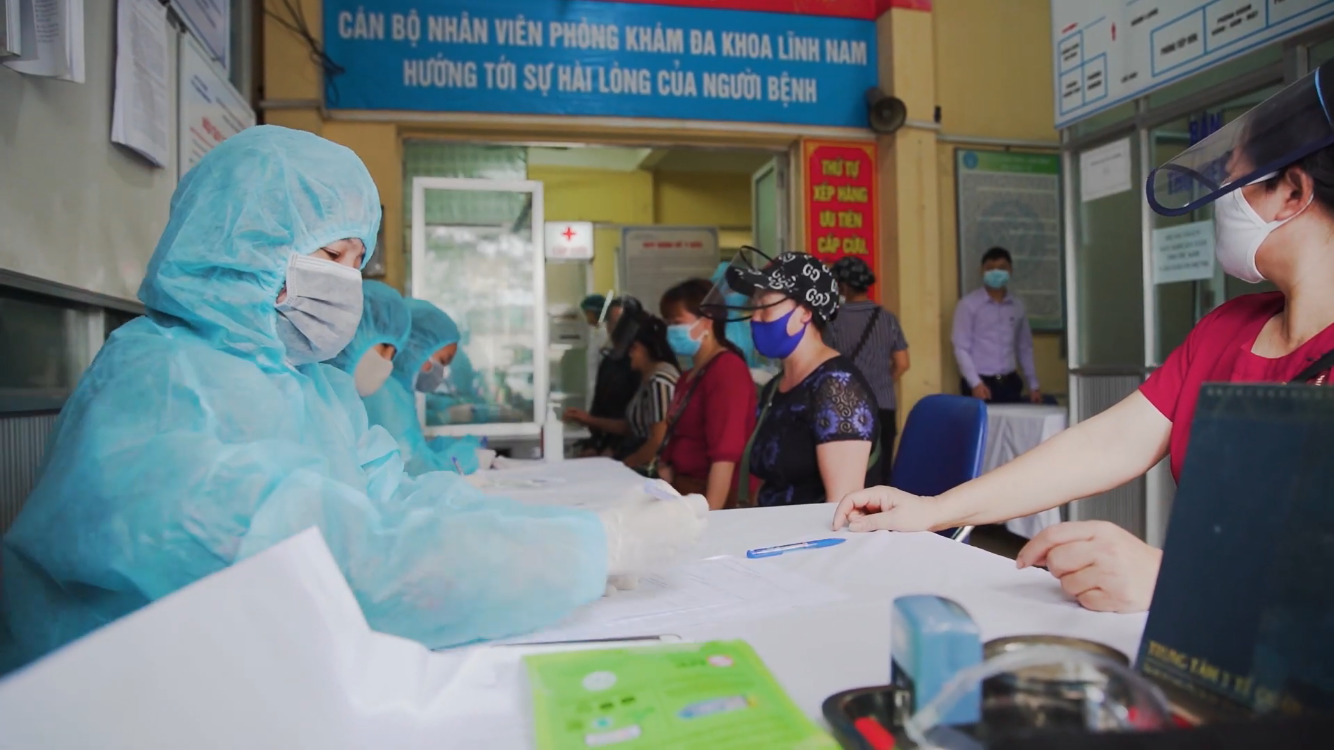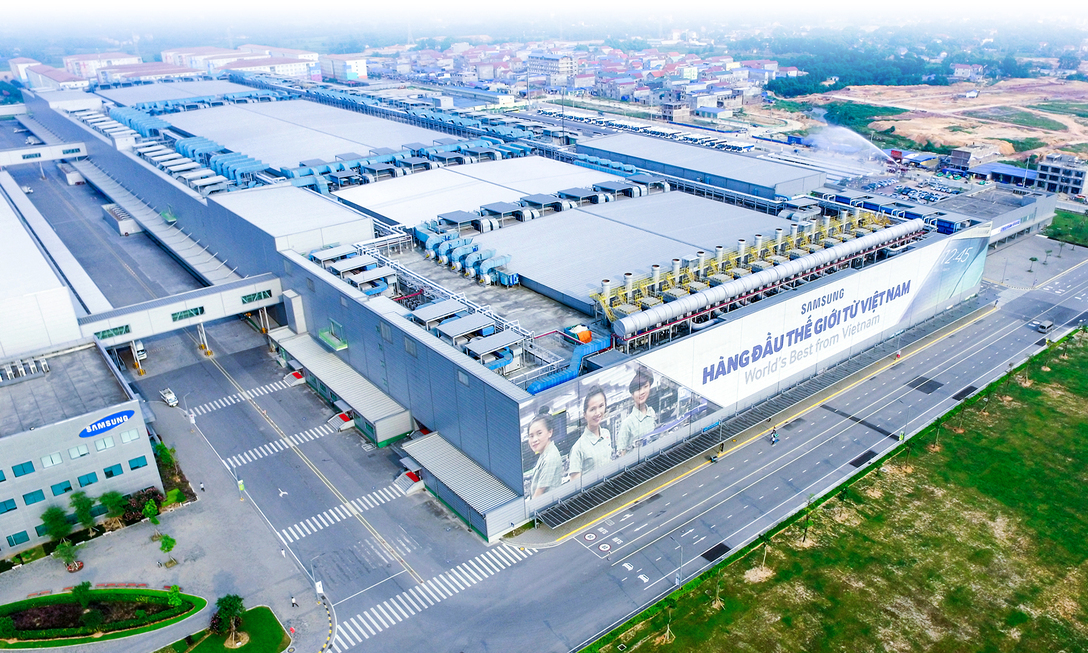We’re very excited to bring you this conversation with journalist Lam Le on Vietnam factory life during the Covid-19 pandemic.
Asia Art Tours: To introduce you to our audience, could you tell us how you entered journalism? And what stories have you been interested in covering, specifically for Vietnam?
Lam Le: I entered journalism in 2016, when I joined VnExpress International, the English edition of VnExpress, the most read online newspaper in Vietnam. After two years there as editor, I decided to go freelance. Ever since, I’ve been writing investigative pieces and features mostly for foreign media. I like to go beyond the headlines to examine long-lasting and overlooked impacts of unjust policies on marginalised groups. My go-to topics range from migration, workers’ rights, to gender and environmental issues.
 A medical checkpoint for Covid-19 at Saigon Railway Station. Photo Credit: Wikipedia
A medical checkpoint for Covid-19 at Saigon Railway Station. Photo Credit: Wikipedia
Asia Art Tours: Before we discuss Supply Chains (a key area of your coverage as a journalist), I’d like to summarize how Vietnam has governed Covid. What was Vietnam’s public health policy at the start of the pandemic, and what changes would we see in policy today?
Lam Le: Throughout 2020 and up until September 2021, Vietnam officially followed a zero-Covid strategy. Vietnam isolated itself from the rest of the world by shutting borders. Whenever an outbreak was detected, the aim was to cut off the chain of transmission through test, trace, and isolate. The strategy worked well in 2020, caseloads and death numbers were among the lowest in the world while GDP growth was among the highest worldwide.
Then in April/May 2021, the Delta variant slipped through the cracks of Vietnam’s Covid-19 prevention shield, sparking the fourth and worst wave of Covid-19. The virus hit industrial hubs where labourers work and live in cramped quarters. The zero-Covid logic and the pressure to continue production to keep the economy going dictated how the government initially responded to outbreaks in factories: isolate workers from the rest of the population. That means quarantining thousands of workers at factories where even a single case was detected. Meanwhile, those wishing to continue production had to make sure they could keep the virus at bay – that means maintaining Covid-free zones within factory quarters by making workers work, eat and sleep on the premises. This arrangement became known as three-on-site.
 A Vietnam rapid testing center. In a recent podcast, we discuss how Vietnam was lauded for having one of the best Covid-19 public health responses in all of Asia. Photo Credit: Wikipedia.
A Vietnam rapid testing center. In a recent podcast, we discuss how Vietnam was lauded for having one of the best Covid-19 public health responses in all of Asia. Photo Credit: Wikipedia.
However, the Delta variant spread faster than Vietnam’s contact tracers could trace it. There were widespread factory closures as companies did not have the means to conduct three on-site. As daily caseloads exceeded the 10,000 mark, it became evident that zero-Covid was not a viable strategy to fight Delta. The government then started shifting its strategy by using zero-Covid as a way to buy time while the country scrambled to vaccinate the entire population. By late September, the government officially abandoned its zero-Covid strategy and shifted to the so-called safe and flexible adaptation to the pandemic, by gradually lifting restrictions. We’ve had no more lockdowns since. Factories are back to operating pretty much as normal as workers are fully vaccinated. In 2022, the country started opening its borders to select international flights as more than 90% of adults are now fully vaccinated.
I doubt we’ll see any more lockdowns. Arrangements like three-on-site are a thing of the past as what we’re seeing now is a gradual and cautious return to normalcy.
 One of Samsung’s northern Vietnam manufacturing plants. PHOTO CREDIT: VNExpress
One of Samsung’s northern Vietnam manufacturing plants. PHOTO CREDIT: VNExpress
Asia Art Tours: Was the development of Vietnam as a critical part of global supply chains actively cultivated by the government, actively cultivated by international corporations (Nike, Intel, Samsung) or a mix of both?
Lam Le: I think it was a mix of both. It started in the 2000s, when the government joined the World Trade Organization, signed multiple free trade agreements and lowered corporate taxes as a way to attract foreign direct investment. Couple that with the country’s abundant cheap labour and proximity to China and you have a pretty attractive destination for multinationals to set up new manufacturing bases at a time when labour costs were rising in China. The US-China trade war, as well as Covid-19 related supply chain disruptions further solidified investors’ need to diversify their supply sources away from China.
 Police go door to door to inform citizens of Covid-19 Policies. PHOTO CREDIT: Wikipedia.
Police go door to door to inform citizens of Covid-19 Policies. PHOTO CREDIT: Wikipedia.
Asia Art Tours: For Rest of World you write:
Around the end of May, employees at Samsung Display in Vietnam’s industrial Bac Ninh province were given a choice: Stay home without shifts, or move into a company-designated space and keep those jobs — with a little extra pay, according to some workers, as an added sweetener.
This was Samsung Display feeling its way through one of the earliest examples of “three-on-site,” a Covid-19 containment arrangement where workers work, eat, and sleep in the same area. More broadly, the Vietnamese government was under pressure to prove its zero Covid-19 strategy, and assure foreign investors that its supply chain would continue to pump out products at speed, said Le Hong Hiep, senior fellow at the ISEAS-Yusof Shak Institute in Singapore. Samsung Display declined to comment for this article.
Were international businesses more tolerant of stringent public health guidelines early in the pandemic? And do the covid policies of international corporations differ from those followed by local businesses in Vietnam?
Lam Le: The stringent public health guidelines like three-on-site were set out by the government. Factories are generally not designed with workers living on site in mind. Therefore, whoever could continue production amid such strict zero-Covid rules came down to who had the money and the means to do so. It was indeed a costly matter as suddenly companies had to set up sleeping quarters, showers and run kitchens for staff staying on site. Some even went as far as to house workers in hotels.
The likes of Samsung, Foxconn and Intel could afford it, but many more couldn’t. There were widespread factory closures throughout the summer months of 2021, especially in the garment sector which is more labour intensive than electronics, and thus harder to social distance.
 Vietnam factory workers eating lunch. PHOTO CREDIT: Wikipedia
Vietnam factory workers eating lunch. PHOTO CREDIT: Wikipedia
Asia Art Tours: Could you discuss the working conditions? Did companies offer incentives for workers to endure more risky work/harsh labor conditions? And did workers feel like they had other options besides enduring these riskier conditions?
Lam Le: Working conditions varied greatly from company to company. Some just slept on a mat or mattress in a warehouse. Others were sleeping in tents or on cardboard beds. Those that lived inside factories had little to no privacy, missed home and often did not know when the arrangement would end. One worker described the day when his working arrangement ended as like “getting out of prison.”
The most comfortable of all were probably those who stayed in hotels, sometimes even five star ones. One such worker that I talked to was grateful to be able to go work, have an income and live comfortably at a time when people were locked down in Ho Chi Minh city, struggling to even get enough food on the table.
All workers that I interviewed said they received extra pay for agreeing to live on-site. While none of the workers I talked to was coerced by their company to work in such conditions, they felt they had little choice since the alternative was being stuck locked down in their cramped room at a time when Covid-19 was spreading really wide and fast. Note that most of the factory workers are migrants, so they’d have been away from family either way. Workers said having an income and one said not having to worry about getting food at the end of a shift was a blessing. Some felt a sense of duty towards their company and considered the situation as a shared burden that all the staff had to endure to get through this difficult time.
I didn’t speak to many workers that didn’t join three on-site, but from what I’ve learnt during my reporting is that some didn’t join the arrangement because they needed to look after their children.
You can read more of Lam Le’s work on Vietnam and global reporting on her website:
You can also follow Lam Le on Twitter at: @LamLe52

